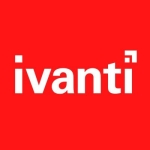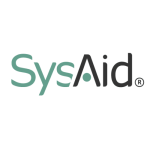What is our primary use case?
The primary use case was basic ITIL/ITSM.
How has it helped my organization?
It replaced an older system, called ManageNow. It had no major impact on the way we operated. We more or less continued, we had a well-performing organization, so it really didn't change much. Everything we had in ManageNow, we had in BMC Remedy, including basic incident management, event management, based on monitors spread around our environment.
What is most valuable?
It was a full-featured product. Based on my experience where I was responsible for Remedy, and for a later project where I worked on a very sophisticated implementation of BMC Remedy, it is full-featured and could do almost anything that you can think of in the ITIL portfolio.
What needs improvement?
BMC Remedy has more features now than I know about and have used, so it would be presumptuous for me to try to suggest improvements for a future release.
What I do find is that, compared to ServiceNow, BMC Remedy is somewhat "closed." I can go to the ServiceNow website and learn everything there is to know about the product, and training is available. That really wasn't available with BMC Remedy.
However, if I'm working with a client who wants to expand and move into other areas - they want to expand their workflow and other parts of the organization, they want to do some work with project management, they want to do some work with HR - I'm not sure that BMC Remedy is doing that. And it's because of their platform. Any software has a lifecycle. To me, BMC is a dated architecture. I wish them well but I don't see how they're going to keep going, long-term, without a total rewrite and coming out with a new system.
For how long have I used the solution?
Three to five years.
What do I think about the stability of the solution?
BMC Remedy is good. It's solid. I don't remember ever having any stability problems with it.
What do I think about the scalability of the solution?
I didn't see any limits. I worked with one client who had, to me, what seemed like a lot of servers. They had some 25,000 servers. They had a lot of BMC workflows. They had a lot of users on the system. I never really got a full feel for how many, based on what I was doing, but I saw no scalability issues. ServiceNow and BMC Remedy scale about equally.
How are customer service and technical support?
There were times when we needed to talk with BMC service support, and we got good response. It was something that we paid for, but we got good response.
Which solution did I use previously and why did I switch?
The old system was at the end of its lifecycle, it was being phased out. The name of it was ManageNow, and I don't know that it exists anymore. It was very old and BMC Remedy was a step up, in the right direction, to a modern system.
When selecting a vendor it depends on the client. In my case, I was selecting for a client and BMC Remedy was the best available at the time. We did an evaluation of all the vendors, and BMC Remedy was the best. That was eight years ago.
How was the initial setup?
Initial setup was like any other similar implementation. There are certain things that you have to do, tables that you have to build, configurations that you have to work with. There are a few modifications that you have to make so that it fits into your environment. We tried to stay as close as we could to the out-of-the-box solution. So it was fairly straightforward.
There are portions of BMC Remedy that are proprietary. One of those was attachments. If I attached an image, if I attached a project plan, if I attached a screen print, getting those out was very difficult when we moved servers to ServiceNow. So if you're not planning on moving, it's not an issue. It's when you move it the issue.
What other advice do I have?
ServiceNow is expanding. If I were just choosing an ITSM system right now, it would be hard to choose, if you ignored the underlying platform. BMC Remedy is very old. It has a very old infrastructure. So if I ignored that, and the "openness" issue, it would be very hard to choose between BMC and Service Now.
I would rate at nine out of 10. It did what we wanted it to do. We had some issues, but we caused those issues by the way we implemented it. I found that BMC training and BMC availability for learning how the system worked and for answering questions - if it wasn't in their manual, it was very difficult to get that information. You had to pay, it wasn't open. It was a "closed" environment. If it had been much more open, so I could get into understanding everything, that would have been better.
In terms of advice, if you're working for a large company on an ITSM solution, where you're talking about incidents, problems, change, knowledge, there are three, maybe four vendors. I would say look at those very hard, learn what you can, and make the best decision for your organization. It's a limited market.
Disclosure: I am a real user, and this review is based on my own experience and opinions.




















I agree with majority of your comments. However, you should know that ultimately Service Now has started doing few things the way BMC used to do and vice versa :-) E.g. Service Now training and certification process was relatively simple and affordable initially (which was contrasting with BMC that was far more expensive). But now Service Now started making training mandatory and certification policies are now such that you have to frequently keep certifying as an admin or developer on newer versions - which is a bit of pain and also much more expensive for an individual where organization may not be sponsoring the bill!
Other thing was - BMC Remedy was always very flexible about allowing customization for ON-PREMISE variant while it was quite restrictive about customization (and continues so as per my understanding) in R-O-D (cloud variant). Service Now was relatively flexible and still continues to be more flexible about customization in Cloud variant - but now I am hearing from some experienced people that Service Now has started getting more restrictive gradually. Larger enterprises that have varied processes requiring more customization may face issues due to these restrictions or may end up spending more than anticipated money and time.
Personally I have not gone into that aspect of service now but the sources are reliable - just to be clear. But anyone deciding between these leading solutions, should consider this aspect as well.